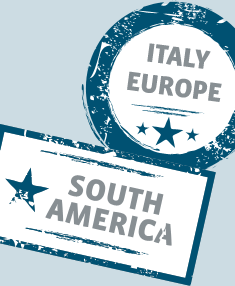

 |
WelcomeThrough a 1906 initiative of church forces in New York City, Waldensian interest groups - which since the mid-1800s had arisen here and there across the country - were invited to coalesce into a new entity, The American Waldensian Aid Society (AWS), organized “to collect funds and apply the same to the aid of the Waldensian Church in Italy and elsewhere…and to arouse and maintain interest throughout the US in the work of said Church…” In the launch decades AWS’ priorities abroad included earthquake relief (1908, Sicily), the building (1914) of the landmark Piazza Cavour Church in Rome, care of children orphaned by WWI, and, at home, across the major European immigration years, assisting in the settlement of Italian Protestant immigrants and formation of Italian language Protestant churches. The ‘20s and ‘30s saw the proliferation of AWS branches, notably in urban areas, with branch-by-branch attention to overseas salary support, evangelization ministries, and focused building projects. As the shadow of Fascism stole across Italy interest began to falter at points, although in an arresting faith commitment AWS and its constituencies during the WWII years, with overseas contact broken off, still would accrue and bank funds for Italy’s day of liberation and renewed ministry initiatives. No postwar effort generated more AWS enthusiasm than the late ‘40s/early’ 50s campaign to build Agape, the conference center deep in the Waldensian Historic Valleys near the Italian-French border. This likely marks AWS’ first sustained effort to send Americans overseas not as tour people, but as co-workers for shoulder-to-shoulder ministry on the territory. In the ensuing decades the sending abroad of volunteers in mission would become a signal AWS endeavor. In furtherance of marking the Waldensians’ “800 years” AWS sponsored and published, in 1980, the English translation (The Waldensians, 240 pp.) of Giorgio Tourn’s I Valdesi (1974); written through the prism of modern historico-critical scholarship, the Tourn work was the first restatement of the Waldensian experience in half a century. The last decades of the century saw the AWS board’s “discovery” of Waldensian ministry in Argentina and Uruguay, and increasing deployment as switchboard-promoter-facilitator-enabler of “crossings” - overseas Waldensian seminarians’ and leaders’ missions to the US and engagements in Europe and Latin America on the part of US church people. In these matters the “denominational connection” factor was emerging as key to AWS’ self-understanding - the crossings business effectively serving to enlarge and fortify Waldensian and US denominational partnership and solidarity, with AWS as friendly “broker”. Today the AWS and its Board of Directors are concentrating its witness into these priorities of the Waldensian Church: • Integration of and advocacy for Third World refugees and immigrants • Expanded presence in the culture through “Diaconal” (caring) ministries • Increased solidarity with suffering peoples and sister churches in Latin America, Africa and the former Eastern Europe • Commitment to ecumenical initiatives through participation in the work of European and Latin American councils of churches, the World Council of Churches, the Alliance of Reformed Churches, and the World Methodist Council • Commitment to Interfaith dialogue
|

828-874-3500 local | info@waldensian.org

